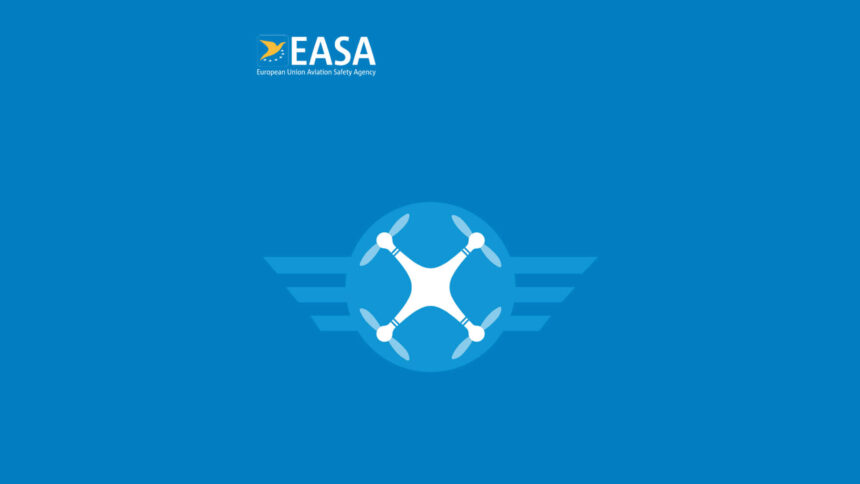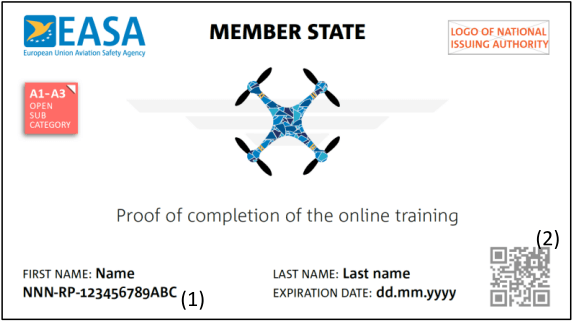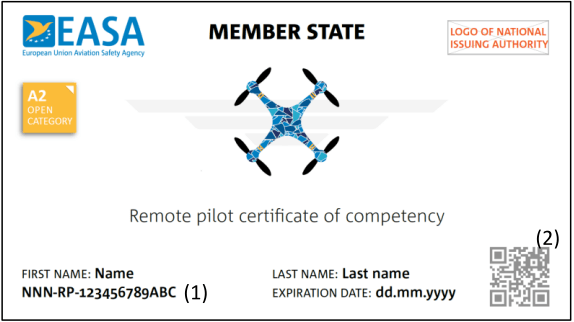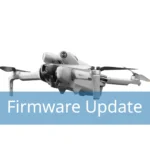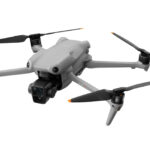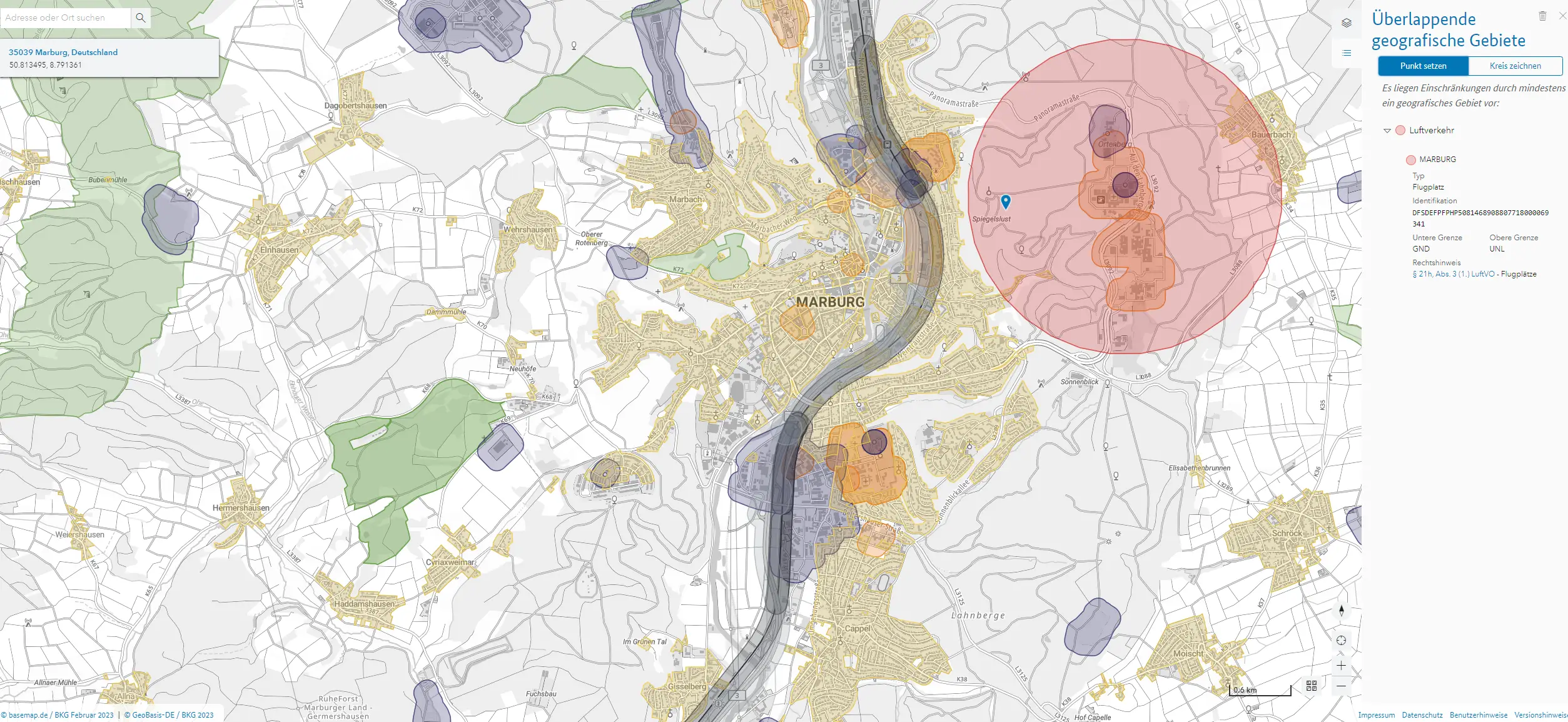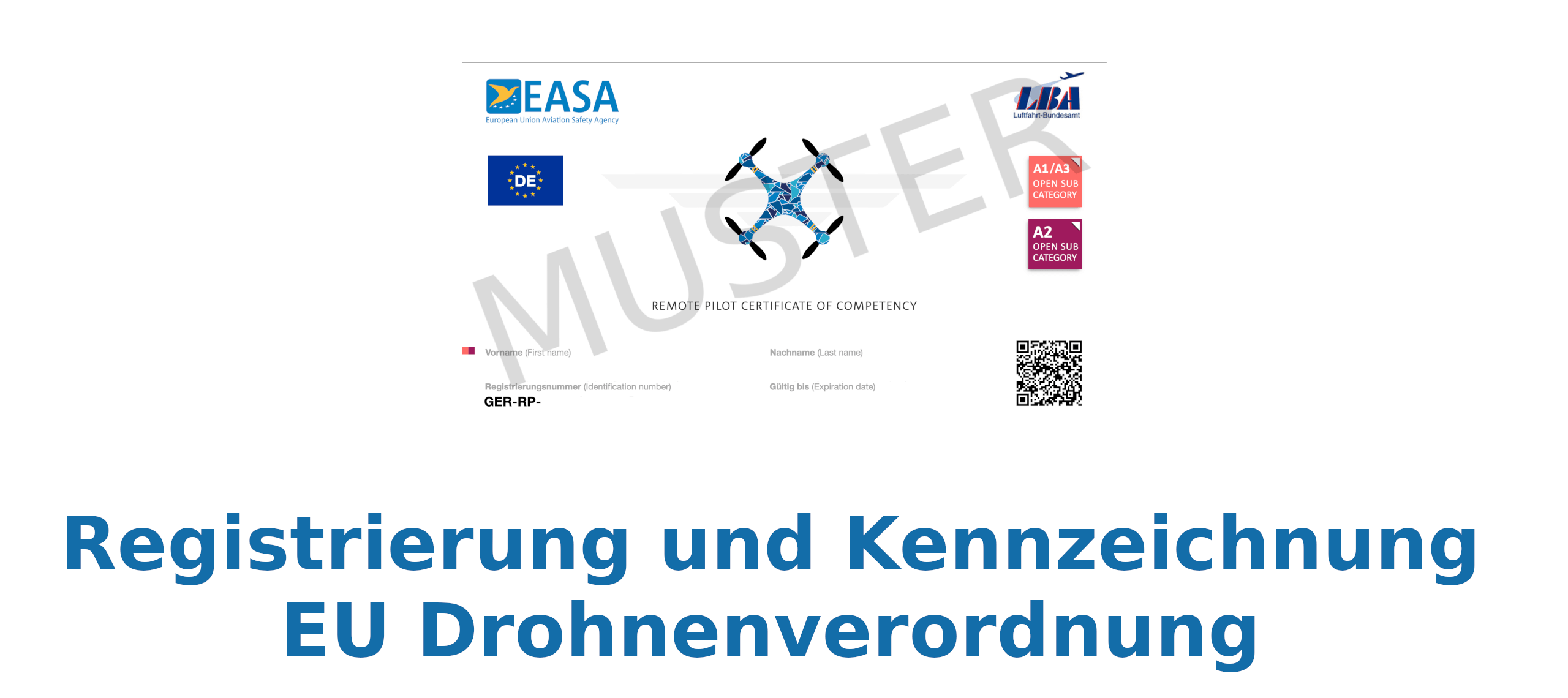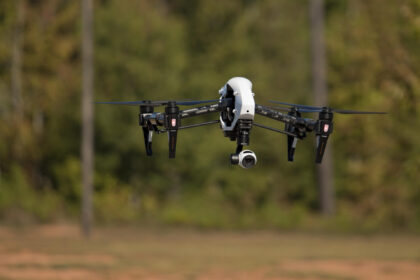Everything you need to know about the new EU Drone Regulation 2024. The EU Drone Regulation describes where and how you are allowed to fly your drone in the EU. It is the basis for all national drone laws and therefore a must for all drone pilots. In this article, we summarize all the important regulations and information about the current laws for you. Learn now everything you need to know for drone flying.
Anyone who wants to fly drones in the EU must know the current EU Drone Regulation 2024. It contains all the important information that drone pilots need to know if they want to fly legally with their drone. In addition to this, the individual countries can still add their own regulations, but they are all based on the EU laws.
On the following page we provide you with an overview of the current EU drone laws 2024 with all the important information that is relevant for drone pilots. Individual sub-areas are also addressed in more detail in separate articles. In this way, we want to keep the article as comprehensive and yet as lean as possible.
Please note: The information on this page has been compiled to the best of our knowledge and is partly freely translated. Many texts are currently still available as drafts and/or in English. Should there be any changes to the regulations before or after the official launch, we will of course update this page.
New EU Drone Regulation 2024 – what has changed?
With the introduction of the EU Drone Regulation at the end of 2020, the laws surrounding unmanned air traffic were standardized within the EU – as far as possible. This inevitably led to deviations in the drone regulation from 2017 that was valid in Germany until then.
- Increase of the maximum flight altitude from 100m to 120m
- Adjustment of weight limits
- Registration of drone pilots
- Introduction of two different drone pilot certificates (EU certificate of competence and EU remote pilot certificate
- eID for drones
The EU Drone Regulation is additionally structured as follows:
- Classification of drones into classes (C0 – C5)
- Classification into application scenarios (Open, Specific, Certified)
The following paragraphs describe the above points in detail.
Application scenarios of the EU Drone Regulation 2024
Each drone flight is classified into one of three categories based on its characteristics: Open, Specific and Certified. The Open category is further subdivided into three subcategories A1, A2 and A3. If a drone flight cannot be assigned to any subcategory of the Open category, it automatically slips into the Specific category. If the application is not covered there either, the highest classification is reached, the Certified class.
For most hobby pilots, the Open category will apply most often, while commercial drone pilots will have to distinguish between Open and Specific. The Certified category will play little role for most drone pilots and will likely apply mostly only to industrial companies such as drone delivery services and similar businesses.
Use Case Scenario: Open
- No permits necessary
- Compulsory insurance for all drone pilots
- Low risk drone flights
- Flight only allowed within visual range
- No transport of dangerous goods
- No dropping of objects
- Depending on subcategory/drone class Online training…
- …drone pilot license…
- …or registration of the drone pilot necessary
- Minimum age may be chosen by each member state. In Germany it is 16 years, except for toy drones according to directive 2009/48/EC (drones under 250g without camera or sensors for recording) for which there is no age classification
- A drone license plate with EU registration number (eID) of the drone pilot is required. Except for toy drones (drones under 250g and without recording function).
- In addition, there are regulations of the respective EU member state. For example, they themselves may define so-called “No Fly Zones” (no-fly zones) or certain additional restrictions, which must also be adhered to. This usually concerns airfields, military installations, prisons, government buildings and in Germany probably also residential areas (flight only with the consent of the property owner should remain, for example), see section “No Fly Zones” in the article on the “old” drone regulation).
- In Germany, these zones are being discussed in a current draft law and should find their way into the German Air Traffic Regulations (LuftVO) in the course of 2021. Until then, the points of the old drone ordinance will still apply, unless they deviate from the points of the EU drone ordinance mentioned in this article. In that case, the laws of the new regulation already apply.
- Further restrictions additionally result from the drone class (C0-C4). More on this below.
Subcategory A1
- Flight over people possible (depending on the C classification of the drone).
- Overflight of uninvolved third parties must be avoided
- No overflight over crowds of people
Subcategory A2
- Flight at a safe distance from uninvolved persons (at least 30m).
- For drones that have a “Slow” mode, the distance can be reduced to 5m
Subcategory A3
- Flight only at a great distance from people
- no uninvolved third parties in the entire flight area
- minimum distance to residential, industrial and commercial areas of at least 150m
Overview graphic
The following graphic provides a coherent overview of the requirements for the Open application scenario, its subcategories A1, A2 and A3, ando the drone risk classes C0-C4 presented further below.

Use Case Scenario: Specific
If the planned drone flight does not meet one or more of the criteria listed in the Open category, it automatically slips into the Specific category. In this case, a separate SORA-GER risk assessment is required for the operation. This must be submitted to the authority in order to obtain an exemption for the planned flight.
Alternatively, so-called standard scenarios can be used, which make a corresponding SORA-GER assessment superfluous and should simplify the approval process. Two standard scenarios are known to us so far:
- STS-01 – VLOS (Visual Line of Sight) over a controlled area on the ground in a populated area.
- STS-02 – BVLOS (Beyond Visual Line of Sight) over a controlled area on the ground in a sparsely populated area with airspace observer
Authorities are free to create further standard scenarios themselves. As soon as we receive more information, we will update this section.
With a LUC certificate (light UAS operator certificate), the application for authorization can be reduced to a one-time application. However, the cost and effort of a LUC certificate is not yet foreseeable. It is equivalent to a comprehensive certification of the drone pilot or the operation itself and will therefore be neither cheap nor quick to obtain.
Use Case Scenario: Certified (Certified)
- Extensive approval procedures
- Use cases: Overflight of crowds, transport of people or loads, transport of dangerous goods.
- Not relevant for hobby pilots as well as for commercial drone pilots from the field of aerial photography
Drone classes C0-C4 of the EU Drone Regulation 2024
In the future, drones will be divided into five different risk classes marked C0 to C4. The class of a drone will be decisive for the category in which it can be flown and the requirements that are placed on the drone pilot.
The classification into a class is carried out by the manufacturer of the drone itself on the basis of established guidelines. The label will then be available to view before a drone is purchased.
Currently, there are only a handful of drones with appropriate C designations. Therefore, most current drones that will have to do without a C-label will fall into a special category and be listed as so-called inventory drones (more on this below, “Transition phase for existing drones”).
In this way, drones already on the market should be able to be used without any problems even with the new EU drone regulation. The following paragraphs provide an overview of the respective classes C0-C4. More details can be found in our separate article on the EU drone classes.
Drone class C0
The following drones included:
- Weight of the drone is less than 250 grams (also for homebuilt drones).
- Self-built drone over 250 grams falls under class C3 or C4
Specifications for the manufacturer/drone
- The drone must not fly faster than 19 m/s (68 km/h)
- Maximum flight altitude must be adjustable
Regulations for this class
- Drone pilot must read instruction manual
- Drone pilot must register if there is a camera on the drone (in this case, it is also necessary to attach the license plate with the registration number of the drone pilot)
- no EU drone license/EU proof of competence is necessary
- It is allowed to fly in all subcategories of the Open application scenario, i.e. also over people (no crowds)
Drone class C1
The following drones included
- Weight of the drone is less than 900 grams or the kinetic energy is less than 80 joules
Specifications for the manufacturer/drone
- The drone must not fly faster than 19 m/s (68 km/h)
- Maximum flight altitude must be adjustable
- Return-to-home function must be available
- Electronic identification (eID) is required
- GEO awareness system (automatic flight restriction monitoring) is required
Regulations for this class
- Drone pilot must read instruction manual
- Drone pilot must have EU certificate of competence (online training and online test), also known as “small EU drone license”
- Drone pilot must register and affix a drone license plate/badge with registration number to the drone
- Flights from subcategory A1 in the Open application scenario possible (but no flight over people)
Drone class C2
The following drones included
- Weight of the drone is less than 4 kilograms
Specifications for the manufacturer/drone
- Maximum flight altitude must be adjustable
- Return-to-home function must be available
- Low-speed mode must be available
- Electronic identification (eID) is required
- GEO awareness system (automatic flight restriction monitoring) is required
Regulations for this class
- Drone pilot must read instruction manual
- Drone pilot must have EU certificate of competence (online training and online test), also known as “small EU drone license”
- Drone pilot must register and affix a drone license plate/badge with registration number to the drone
- For flights in subcategory A2 of the Open application scenario, the drone pilot must pass a theoretical test at a recognized testing center (EU remote pilot certificate or also known as “large drone driver’s license”)
- A minimum distance of 30 meters from people must be maintained (subcategory A2)
- However, when low-speed mode is activated (max. 3 m/s), the 1:1 rule applies in terms of altitude and distance to people. This means that at a flight altitude of 10m, you may fly up to 10m away from people. However, the distance must never be less than 5m.
- Flights also possible in subcategory A3 of the application scenario Open
Drone class C3 and C4
The following drones included
- Weight of the drone is less than 25 kilograms or drone is a homemade with more than 250 grams
Specifications for the manufacturer/drone
- Maximum flight altitude must be adjustable
- Return-to-home function must be available
- Electronic identification (eID) is required
- GEO awareness system (automatic flight restriction monitoring) is required
- No autonomous flight allowed (class C4)
Regulations for this class
- Drone pilot must read instruction manual
- Drone pilot must have EU certificate of competence (online training and online test), also known as “small EU drone license”
- Drone pilot must register and affix a drone license plate/badge with registration number to the drone
- Flight only possible in subcategory A3 of the Open application scenario. So it is only allowed to fly outside of cities and only where no uninvolved persons can be endangered.
Source: easa.europa.eu – (EU) 2019/945
Transition phase for existing drones
Since there are only a few drones with the new C classification so far (as of July 2023), a transitional arrangement exists for most drones on the market (drones manufactured before Jan. 1, 2024, that do not have a C label).
The drones are allocated depending on their weight and corresponding restrictions are imposed. These can be found in summary in the list below. These drones can be flown without a C-label until Dec. 31, 2023 (validity of the transitional arrangement) depending on their weight in all subcategories of Open (A1 – A3, see list below).
It is officially called limited Open category by EASA.
Existing drones without C-classification (until 31.12.2023)
- Here, too, insurance is mandatory for all drones
- Drone pilot must read operating instructions
Drones under 500g
- Flight possible in all subcategories (A1, A2, A3) of the Open application scenario
- No EU drone license required (neither EU certificate of competence nor EU remote pilot certificate).
- From 01.01.2024: EU certificate of competence required for operation of drones over 250g and under 500g in subcategory A1.
Drones from 500g and under 2kg
- Flight in subcategory A2 and A3 of the application scenario Open possible.
- EU proficiency certificate (small EU drone license) for A3 and …
- EU remote pilot certificate (large EU drone license) required for operation in subcategory A2. Here, however, with increased distance to people (50m instead of 30m as for drones with C classification).
- Note: Thanks to transitional regulation until 31.12.2023 also 30m for existing drones.
Drones from 2kg and under 25kg
- Flight in subcategory A3 of the application scenario Open possible
- EU certificate of competence (small EU drone license) required for flights in subcategory A3
From 01.01.2024, drones without C classification can be flown in A1 if the weight is below 250g (no EU drone license required) and in A3 (EU proof of competence required) if the weight is below 25kg.
Flights in the A2 subcategory would therefore no longer be possible with existing drones weighing more than 250g. (EASA FAQ)
Insurance obligation
Regardless of any new regulations and whether flying is private or commercial, drone insurance is always mandatory in Germany. This is already the case with the existing drone regulation.
We have summarized all information on drone liability insurance in the linked article. Our recommendation here is the favorable insurance coverage from helden.de (ab 39€/Jahr)*.
Drone pilot registration
The online registration application for drone owners is available online. We have compiled important information on this in a corresponding news item.
We have summarized all information on registration and marking according to the current EU Drone Regulation in the following article: Registrierung und Kennzeichnung – eID – EU-Drohnenverordnung
EU Drone Operator Licenses of the EU Drone Regulation 2024
As mentioned several times above, the new EU Drone Regulation also introduces two new “drone operator licenses”.
- EU certificate of competence (“small EU drone pilot’s license”)
- EU Remote Pilot Certificate (“large EU drone pilot’s license”)
Both “driving licenses” will become mandatory as of 01.01.2021 in the respective required subcategory and C-classification (see notes above).
EU proof of competence
- Online training
- Online test
- may be repeated as often as desired
- probably free of charge and can be done online directly at the LBA
- Validity: 5 years
EU Remote Pilot Certificate
- EU proof of competence is a prerequisite
- Practical self-training required (own written confirmation sufficient)
- Theory test at a certified testing center required, usually in combination with a training course
- Validity: 5 years
- Fee-based, as carried out by external and certified providers
It is very likely that the official examining bodies that have been offering the proficiency test up to now will gradually switch over to the EU Remote Pilot Certificate as well.
We have summarized everything else that is important about EU drone licenses for you in our article EU Drone License – All Information.
What happens to an old issued certificate of knowledge?
So far, it is planned to keep the current drone knowledge certificates valid until the end of 2021. After that, they can be converted into the small EU drone license (i.e. EU certificate of competence).
More information will follow in a separate article.
Sources on the EU Drone Regulation
The official source for the EU Drone Regulation is EASA (European Union Aviation Safety Agency). Here you can find all official documents, draft laws and further information. The entire site is in English. Some documents are available in different languages. Particularly relevant here are the regulations (EU) 2019/945 as well as (EU) 2019/947.
The Luftfahrt Bundesamt (LBA) offers a short FAQ on the new EU drone regulation (german), which we also used as a source for our article.
EU Drone Regulation 2024 FAQ
The current EU Drone Regulation 2024 has already been in force since 01.01.2021. Our detailed article provides all information on the current EU regulations.
Yes, with the current EU Drone Regulation 2024, drone liability insurance is always mandatory. You are not allowed to fly without it.
Under the current EU Drone Regulation 2024, it may be mandatory to officially register as a drone pilot with the LBA. This depends on the risk class (C0-C4) of the drone used. We have summarized all the information in this article on the EU Drone Regulation.
With the current EU Drone Regulation, there have been numerous changes in the operation of drones. You can read all about the application scenarios and the new drone risk classes in our article on the EU Drone Regulation 2024.
The German certificate of proficiency was valid until the end of 2021. It could be rewritten into the new EU certificate of competence (small EU drone license). More info can be found in the article.
With the EU Drone Regulation 2024, there are two drone licenses: the small (EU Certificate of Competence) and the large (EU Remote Pilot Certificate). Depending on the drone risk class, one of the two may be necessary. For more information, see the article.


